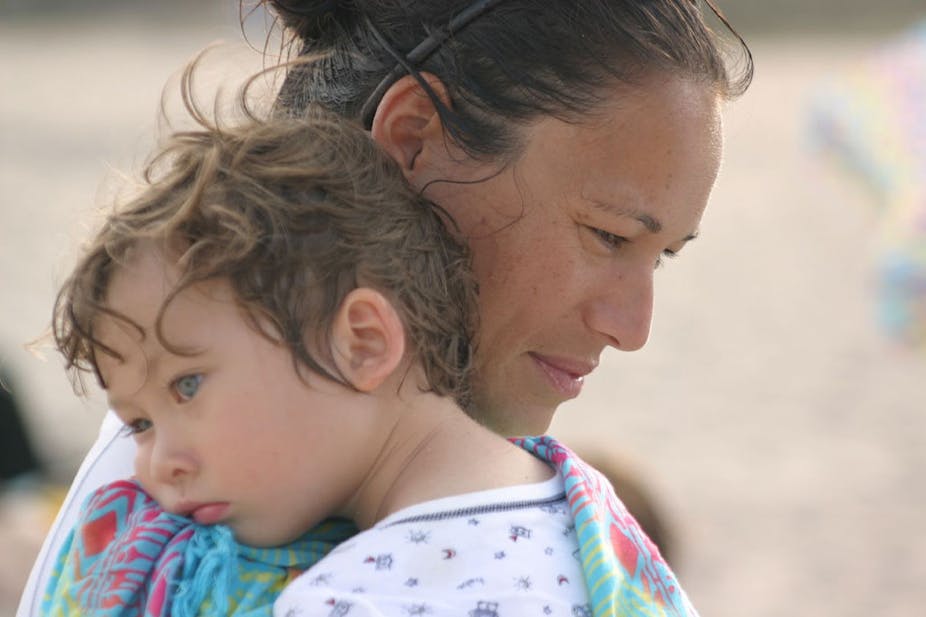Any parent will tell you the meaning of the saying “slept like a baby” is completely opposite to reality. Thankfully, many parents succeed in establishing a routine to their baby’s initial erratic sleep patterns without too much trouble. But for some, sleep problems become an ongoing concern.
Sleep problems are common throughout all stages of childhood. Community based studies report that anywhere between 10% and 45% of children and 11% to 30% of adolescents have one or more sleep problems, which can occur in infancy or develop later.
But interestingly, very few parents seek help. One study reported that of the parents who identified their child as having a clinical sleep problem, less than 15% actually mentioned it to their doctor. This is a concern as sleep problems have been linked to poor attention, behavioural problems and reduced academic performance.
There are around 90 classified sleep problems that can occur throughout childhood. These are categorised into three major areas:
1. Dyssomias
Dyssomias are associated with problems going to sleep or staying asleep and can be behavioural or physical. The most prevalent examples are:
sleep-disordered breathing (snoring, gasping, or short periods of not breathing), periodic limb movements, restless leg syndrome (sometimes described as growing pains),
disorders of initiating and maintaining sleep (refusal to go to bed or stay in bed),
delayed phase syndrome, where the body clock shifts to going to sleep late at night/early morning and staying asleep until late morning/early afternoon. This is particularly prevalent in adolescents.
2. Parasomnias
Parasomnias are associated with arousal, which may or may not lead to full awakening, and transitions from one sleep-state to another. The most common parasomnias are sleep walking, sleep talking, nightmares or night terrors, and bed-wetting.
Many children will experience one or more parasomnia at some stage. This is perfectly normal and is thought to be part of the developmental process. But if they are prolonged, occur at high frequency, or are a danger to the child (such as getting out of the house when sleepwalking), it’s worth talking to a paediatrician.
3. Medical or psychiatric sleep problems
These are associated with diagnosed conditions such as Attention Deficit Hyperactivity Disorder. Often, if the condition is treated, the sleep problems also improve.

Sleep-disordered breathing
The most commonly studied sleep disorder is sleep-disordered breathing: a collection of syndromes that occur on an increasing scale of severity. At the mild end is primary snoring. This is where the child often snores at night, sometimes very loudly, but does not experience any physiological consequences such as a drop in oxygen level in the blood or increased restlessness.
At the severe end is obstructive sleep apnoea (OSA), where the child will snore continually, but also gasp and even stop breathing for short periods. Children with OSA experience drops in oxygen saturation and will arouse, wake or be very restless. They are also likely to be extremely tired during the day.
Between these two extremes, there are many manifestations of sleep-disordered breathing. Around 12% to 15% of infants and children are reported to have some form of sleep-disordered breathing, with 3% at the OSA end of the spectrum. This equates to around 1 million children in Australia, with the highest prevalence in preschool-aged children.
You’d be forgiven for thinking “that’s a lot of unhealthy, overweight pre-school children”, as this is how we usually associate OSA in adults. But it’s often not the case with children. Sleep-disordered breathing predominantly occurs due to the size of the tonsils and adenoids in proportion to the airway.
So the big questions parents want to know are: Does it matter that a child snores? Does severity matter? And does it matter when they started snoring, or how long they have been snoring for?

Sleep researchers and physicians have been trying to answer these questions for many years. The answers seem to be: yes, it does matter that a child snores; no, severity doesn’t seem to make a difference; and we still don’t know if age or duration of snoring have an impact.
Over the past 30 years, research into the impact of sleep-disordered breathing on daytime functioning in children has shown clear associations with hyperactivity, rebelliousness, aggression, mood disturbance, poor academic performance, cognitive impairment, and reduced quality of life.
More recently, sleep-disordered breathing has been associated with changes in heart rate and high blood pressure, suggesting that children who snore may be at an increased risk of developing heart disease later in life.
Interestingly, this doesn’t appear to be associated with severity, as children with primary snoring show the same learning and behavioural problems, as well as the same physiological changes as those with OSA. Why this is the case – as primary snoring is not associated with the increased awakenings and drops in oxygen as with OSA – is still unknown.
So should all parents be racing their snoring children off to get their tonsils and adenoids removed to cure their snoring? Definitely not.
But it is important for parents of children with sleep problems to talk to their family doctor for the best treatment option. Hopefully, with just a few helpful hints or treatment strategies, sleep will no longer be a problem.
See more Explainer articles on The Conversation.

